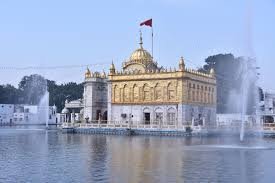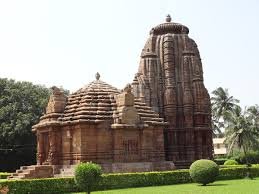
Gabbar Hill, located near the town of Ambaji in Gujarat, holds immense religious and cultural importance in Hinduism. The scenic Aravalli ranges cradle this sacred hill, closely associating it with the goddess Amba, a revered form of Shakti. Pilgrims and tourists flock to Gabbar Hill for its divine significance, spiritual ambiance, and breathtaking natural surroundings. The site is more than just a place of worship; it represents a deep connection between faith, history, and culture. read more about Gabbar Hill Ambaji
The Mythological Significance of Gabbar Hill
According to Hindu mythology, Gabbar Hill is believed to be the original abode of Goddess Amba. This makes it one of the Shakti Peethas, or sacred places of worship dedicated to the divine feminine energy.. Gabbar Hill Ambaji is important.
The Iconic Holy Lamp
One of the unique features of Gabbar Hill is the eternal holy lamp (Akhand Jyoti) that burns in a cave-like shrine. The lamp symbolizes divine energy and is a focal point of worship for pilgrims. Visitors often climb the 999 steps leading to the temple at the hilltop to witness this sacred light. The climb is not just a physical journey but a spiritual one, as devotees chant hymns and prayers with every step, enhancing their connection to the divine.
Architectural and Natural Beauty
Gabbar Hill seamlessly combines spiritual significance with natural beauty. The panoramic views of the surrounding Aravalli ranges captivate visitors, making it a serene escape from the bustle of everyday life. The temple’s architecture reflects ancient Indian craftsmanship, with intricate carvings and symbolic depictions of deities adorning the site. Furthermore, the pathways and resting spots along the steps are well-maintained, allowing pilgrims of all ages to undertake the journey comfortably.
Beliefs Associated with Gabbar Hill
Devotees believe that a visit to Gabbar Hill can cleanse them of sins and bring prosperity and happiness to their lives. The goddess Amba is revered as the mother of all, and pilgrims seek her blessings for protection, health, and success. Many devotees perform special rituals and offer prayers to fulfill their heartfelt desires. During the Navratri festival, the site comes alive with vibrant celebrations and dazzling lights, drawing countless devotees to its sacred grounds.
The Ritual of Navratri
Gabbar Hill becomes the epicenter of devotion during Navratri, the nine-day festival dedicated to the goddess. Devotees gather in large numbers to participate in Garba dances, night-long prayers, and traditional ceremonies. This period sees an influx of pilgrims from across the country, highlighting the temple’s cultural and spiritual significance.
Donations and Community Contributions
Donations play a pivotal role in maintaining and enhancing the facilities at Gabbar Hill. Devotees generously contribute to the temple trust, which uses these funds for a variety of purposes. These include:
- Maintaining the Infrastructure: The funds are utilized to ensure the upkeep of the temple, pathways, and surrounding areas.
- Organizing Festivals: Donations help in organizing large-scale events such as Navratri, which require significant resources.
- Community Development: The temple trust also supports local initiatives, including education and healthcare for underprivileged communities.
- Pilgrim Facilities: Modern amenities such as drinking water stations, resting shelters, and medical assistance are made available, ensuring a comfortable experience for visitors.
The Spiritual Journey to Gabbar Hill
Visitors often describe their journey to Gabbar Hill as transformative, enriching their spiritual connection and inner peace. The climb symbolizes an individual’s journey toward spiritual enlightenment. With every step, devotees leave behind worldly distractions and immerse themselves in prayer and introspection. The view from the hilltop, coupled with the divine atmosphere, creates a sense of peace and fulfillment that lingers long after the visit.
Gabbar Hill’s Importance in Local Culture
Gabbar Hill is not just a religious site; it is deeply woven into the cultural fabric of Gujarat. It serves as a gathering place for festivals, fairs, and community events. The annual Ambaji Fair, held during Bhadarva Purnima (a full moon day), attracts thousands of devotees and is a celebration of faith and unity. Traditional music, dance, and local cuisines add a cultural richness to the experience, making it a holistic journey of spirituality and heritage.
Sustainability and Preservation Efforts
- Protect the natural environment surrounding the hill.
- Promote eco-friendly practices among pilgrims, such as avoiding plastic waste.
- Preserve the historical and architectural integrity of the temple.
These initiatives aim to ensure that Gabbar Hill remains a pristine and sacred destination for future generations.
How to Reach Gabbar Hill
The nearest railway station is Abu Road, and the nearest airport is in Ahmedabad. Regular buses and private vehicles are available to transport visitors to the base of the hill. From there, it is a short climb of 999 steps to reach the temple at the summit. For those unable to climb, palanquin services are available, ensuring that everyone can experience the divine journey.
A Sanctuary of Faith and Tranquility
Gabbar Hill is more than a tourist destination; it is a sanctuary of faith, tranquility, and cultural pride. Its timeless appeal lies in its ability to connect people with their spiritual roots while offering them an opportunity to appreciate nature and history. Whether it is the devotion of pilgrims climbing the steps, the chants echoing through the air, or the serene beauty of the Aravalli ranges, every aspect of Gabbar Hill leaves an indelible mark on visitors.
Conclusion
Gabbar Hill stands as a beacon of devotion and cultural heritage, attracting millions of devotees and tourists each year. Its association with the goddess Amba, coupled with its architectural and natural beauty, makes it a must-visit destination for spiritual seekers. The site not only offers a glimpse into ancient traditions but also provides a peaceful retreat from the chaos of modern life. Through its rituals, festivals, and community initiatives, Gabbar Hill continues to inspire and uplift those who visit it, ensuring its legacy endures for generations to come.





